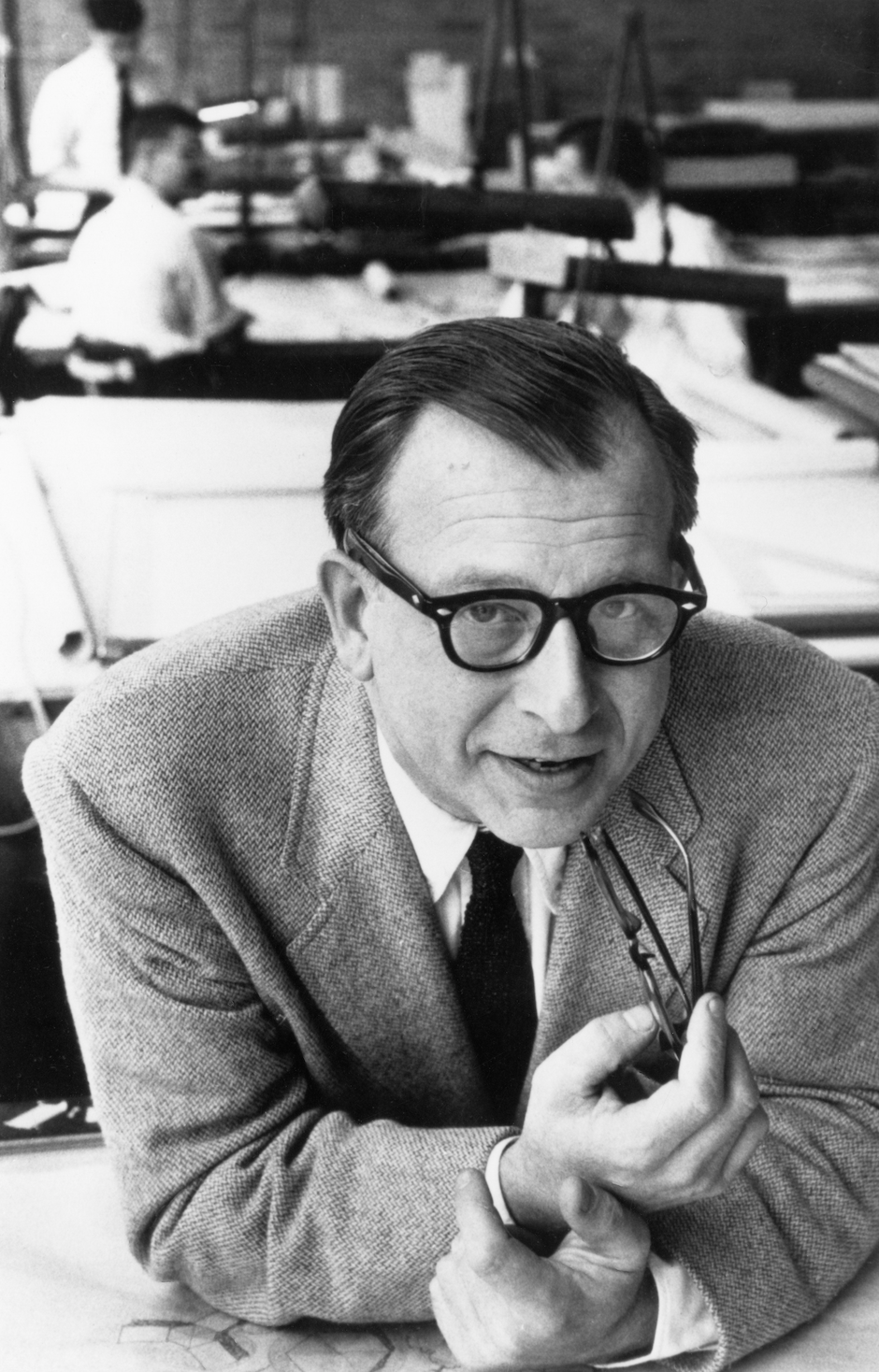Eero Saarinen

Eero Saarinen at a drafting table
Photograph taken ca. 1950
Courtesy of Cranbrook Archives
Finnish-American architect and designer Eero Saarinen (1910–1961) was on the cover of Time magazine in 1956. A profile of the architect stated his work had “a sense of spaciousness and orderliness, the complementing of existing structures, resistance to set a style, a fondness of expressive materials,” (“The Maturing Modern,” Time Magazine, July 2, 1956, 54). It was Eero’s dogged pursuit of revolution in spatial design that would make him an icon of midcentury modern design. The son of acclaimed Cranbrook Academy Director, Eliel Saarinen, Eero was encouraged to draw and design modernist forms from a young age. He is best known for his modernist American landmarks, including the iconic Gateway Arch in St. Louis, Missouri (1963–65); the TWA terminal building at New York’s John F. Kennedy Airport (1956–62); and Dulles International Airport, constructed in 1958. Saarinen collaborated with both the Eames duo and Knoll furniture firm to create furnishings that were the epitome of postwar innovation in form, function, material, and production techniques.
Saarinen’s progressive ideas were inspired by his interest in organic forms and the possible uses. He completed his studies at Yale in 1934, returned to Cranbrook to teach, and met Charles Eames and Florence Schust. His first major commercial success with Knoll was the design of his Model 70 Womb chair, which premiered on the markets in 1943. Saarinen went on to design a number of highly successful designs for Knoll, including 71 and 72, the forms that make up a large proportion of Winterthur’s collection. The 71 chair was a component of one of Knoll’s first office seating programs and was intended to be part of a unified interior in the workplace.
